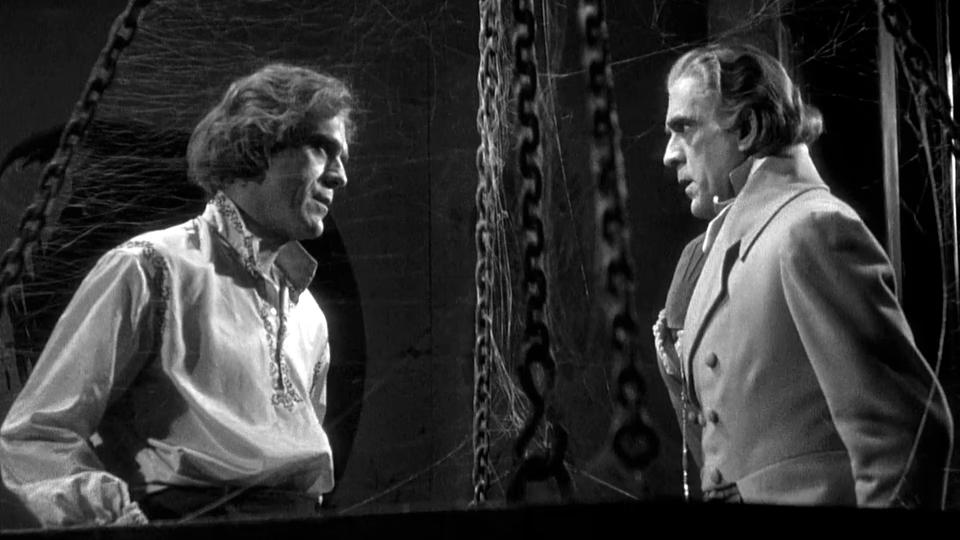The Black Room

The Black Room underwhelms, but not for obvious reasons.
The film opens with a Hungarian Baron learning his wife has borne him identical twin sons. He is horrified, as an ancient prophecy foretells his family line ending with a younger twin murdering the older.
Fast-forward and the twins are both middle-aged and played by Boris Karloff. The younger twin is returning to the family castle after a ten-year absence, driven by his fear of the prophecy. The younger twin proves benevolent, while the older is a sociopath.
Soon—contradicting the prophecy—the older, evil twin murders the younger one, concealing his body in a pit in the titular room, and assumes his identity. The finale sees him fall into the same pit and land on his younger brother’s knife, fulfilling the prophecy.
The production saw Columbia eager to replicate the success of rival Universal’s gothic horrors. They lured Universal’s top horror star, Karloff, with the prospect of a dual role. To facilitate this, Karloff would film the split-screen scenes as one character on one side of the frame. Then he would change costumes and hairstyle and film on the frame’s opposite side. Using an optical printer, these two takes would be combined frame by frame, by manually masking half the frame on the first exposure, then masking the other half on a second pass.
This necessitated some contraints on the filming. The camera had to remain static and nothing, including Karloff, could cross the center of the frame. Karloff and director Roy William Neill do a commendable job working around these limitations.
Consider an early scene where some villagers make an attempt on evil Karloff’s life. The would-be assassins are thwarted but one of their party lies pinned by nice Karloff’s dog. Evil Karloff urges the dog to kill the man. When nice Karloff, shocked, says “No,” and pulls the dog back, evil Karloff snarls at him, “I give the orders around here!”
The scene works largely due to Karloff’s range, but Neill helps by leveraging the scene’s inherent dramatic tension to distract from the split-screen limitations. Karloff even delivers a third, more nuanced performance in the film’s third act where he plays evil Karloff posing as nice Karloff.
But it’s not enough. Nor is Allen Siegler’s surprising cinematography. Beyond aping the Universal look—evil Karloff menacing within shadow-filled castle rooms—Siegler delivers the film’s best moment: when a character realizes evil Karloff is impersonating nice Karloff, Siegler pulls the camera back in a sudden movement, mirroring the character’s emotional recoil, showing us everything without saying a word.
But even that’s not enough. Unfortunately, prophecies and gloomy castle settings alone do not a horror make, no matter how well photographed. The narrative itself must fit the genre, and this story proves more melodrama than horror.
Consider how, minus the prophecy angle, you could easily transplant the story to another genre. Randolph Scott could have played the twins in a western version, with one twin turning outlaw and the other returning from the big city. Heck, The Black Room’s finale even includes a stagecoach chase.
Or shift the setting to contemporary times. That same year, Columbia released The Whole Town’s Talking, another twin-themed film. Edward G. Robinson played the dual role, but director John Ford recognized the premise’s inherent silliness and played it for laughs, resulting in a superior picture.
Columbia was smart to nab Karloff, but they should have poached some of Universal’s writers too. While The Black Room showcases Karloff’s range in an impressive technical achievement, its conventional script pales next to Universal’s contemporary horror innovations. Horror fans expecting the nihilistic terror of The Black Cat or the dark wit of Bride of Frankenstein will leave disappointed, though Karloff enthusiasts should enjoy his nuanced dual performance, even as they wish it was in service of edgier material.